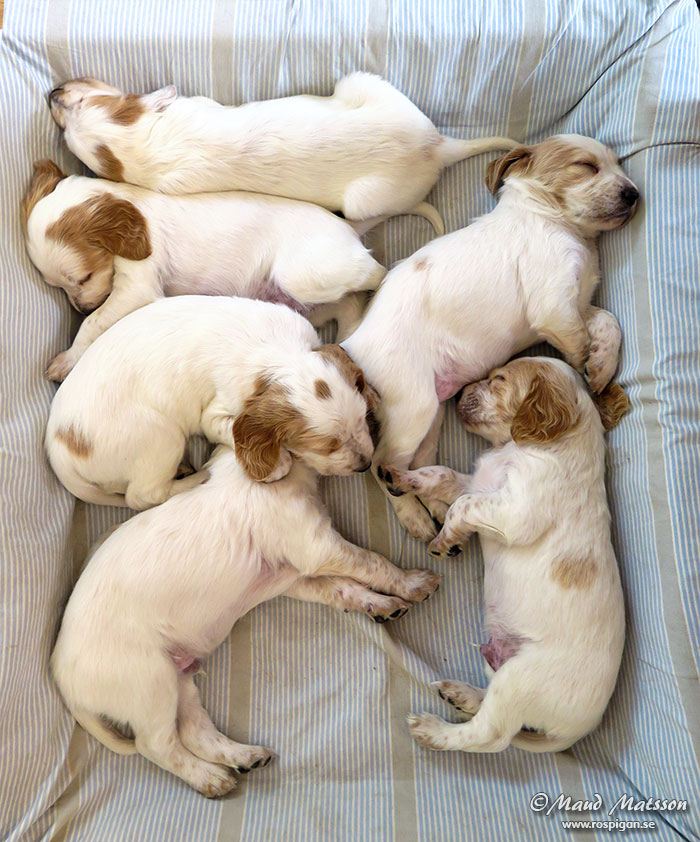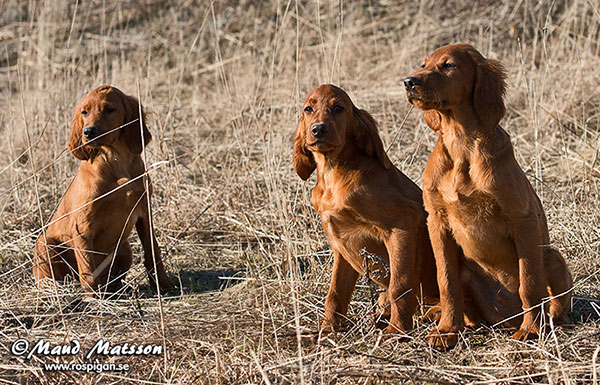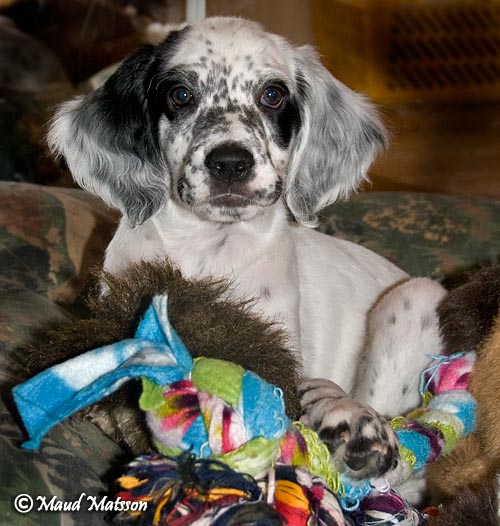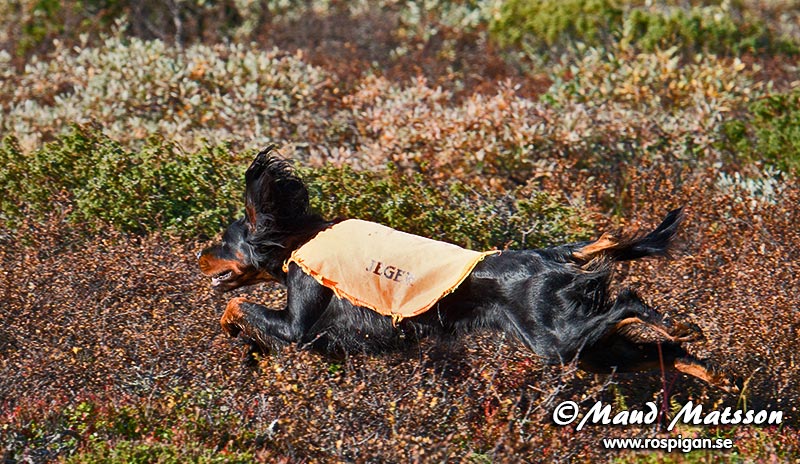Thoughts about inbreeding
There is something within all breeding that is avoided by all means and that is inbreeding. When we talk about humans it is even forbidden in both the law of most countries and perhaps most religions, as far as I know. The reason is that it is commonly believed that inbreeding is the most efficient way to multiply genetic faults and diseases. Then there are many examples of how inbreeding works very well. The white tail deer in Finland descends from 5 (or was it seven?) individuals that came from the USA as a gift to someone in Finland, between WW1 and WW2. Now Finland is littered with white tail deer. The beaver was exterminated in Sweden by fur hunters. A school class of children collected some money and bought a male and a female from Norway and today Sweden is littered with beaver. Even the beaver in Finland, as far as I know, was reintroduced by using Canadian beaver and they hardly came in ship loads from there but probably only in a few examples. Around the world there are many examples of isolated areas with good, healthy, perfectly inbred animals, and also humans, of different species and races. The secret of successful inbreeding lays in the selection. The white tails and the beavers from the wilderness had, before being put out, been subjected to the merciless breeding selection by the nature for thousands of generations and were genetically extremely "pure blooded" and more or less totally free of inheritable diseases. Laverack and Gordon on the other hand used the "breed many and kill many" method, just as mercilessly as the nature can be. Like: out of twelve wild partridges hatched two survives to the next summer to breed. The problem today with our gundogs is more or less the same today. To start with they are not older than perhaps 50 - 100 generations and all we know is that almost every breed has been tampered with during that time, but no one knows for sure in what way. The English pointer for example is diluted with English foxhound and how the setters have been crossbred in the past is unknown… by the way all of them, in all essence, descend mainly from spaniels. The only thing that is more or less sure is that at some stage a bitch in heat has been taken behind a barn and brought together with a male of some other breed. The progeny has then been kept secret and mixed into the "pure" breed again, perhaps with the aid of falsified papers. This procedure can have happened over and over again before more accurate registers came into use, for what we know. Successful inbreeding is hence no longer possible since we have no absolutely pure blood to inbreed from. The tool we have left is very careful selection. To be able to select the best to the best we first have to know what is the best within a breed, what kind of wonderful performance can the best dogs show? In order to do this we must learn about the best dogs and then compare our candidates to them to be able to judge if they can meet, and hopefully surpass, the desired standard. Even then, if we find that our candidate is good enough when judged by the performance standard, we have to consider the hereditary health problems. Different diseases of the hereditary type are inherited by different ways and we have to have a considerable amount of knowledge about genetics, or be humble enough to engage someone who knows, before we take the final decision of bringing two particular dogs together. And to be able to make the aforementioned investigation we also must know the health status of the breeding lines in question in detail and in many generations back. The new DNA- and other technologies can today give us many of the answers but they will not have full effect on the breeding quality until several generations in the future. Unforeseeable ghosts from the past will pop up at least 10 - 15 generations into the future, even provided we act to the best of our ability today.... but unfortunately we don´t do it. There are many reasons why we don´t do it, but to me the first thing that I come to think of is our inability to take a step to the side. In order to be able to evaluate our dog as a potential breeding platform we must be able to look upon it and its characteristics as a total stranger would look upon our dog. We must be able to step outside the bubble that we live in together with our dog in everyday life, and look upon it with the cold, evaluating, critical and unemotional eye of someone who has no emotional ties whatsoever to our dog or us. I have a number of times been criticized for telling about both the good and the bad sides of my or our dogs - I have even been told to never tell about the bad sides of any dog! OK, then! We simply have the dogs we deserve! I don´t see any contradiction between telling the truth about my dog when breeding is discussed, and my affection to them despite of their faults. Those who know me also know my deep relation to our dogs. But there are many people who think that admitting that a dog has something that disqualifies it from breeding, also automatically is denied the owners love. Most often that is not the case but there are of course a few die-hard field triallers who cannot see their dogs as anything else but a tool for the owners succes and fame. The second thing is that too many dog owners live in a virtual reality. The reasons I have already explained, they are based on ignorance, but also on an unconscious but still outspoken will to use the dog as a tool for escaping the real reality of their (perhaps miserable) lives. And their "virtual" dog can have any shape or any size and any mental characteristics that perhaps, or most likely, has nothing to do with the real world working gundog.... or any other duty dog for that matter. Then we have the totally ruthless kennels to whom the dogs represent nothing but a profit and they avoid no means to take home the profit. Cheating is only one of the means. Finally, in genetics 2 + 2 most often is something else than 4 and there is no way to know for sure what the outcome will be like, but with careful selection our predictions will improve significantly. I use to say that, due to the aforementioned confusion, in order to maintain a constant number of 100 FTCHs (field trial champions) over the time we need a base of 10000 dogs to achieve this. That is how extreme our sport with the British birddogs is! Torsti Layout: Maud Matsson
|

 So under some circumstances inbreeding evidently cannot be bad. The English Setter was created by the unprecedented wizard of inbreeding, Edward Laverack (1798 - 1877). The Duke of Gordon (1743 - 1827) who created the Gordon setter was most likely neither particularly shy in that sense.
So under some circumstances inbreeding evidently cannot be bad. The English Setter was created by the unprecedented wizard of inbreeding, Edward Laverack (1798 - 1877). The Duke of Gordon (1743 - 1827) who created the Gordon setter was most likely neither particularly shy in that sense. It is quite obvious that careful selection of the blood is the key to success, together with some instinctive feeling when selecting individuals for successful breeding of animals. The wolf researchers in Sweden are now probably totally desperate, knowing this fact, and by all means try to dilute the genes of the inbred mongrel wolfs, of entirely unknown and uncertain origin they have put out and have to deal with, with pure blood from the wild Siberian wolf.
It is quite obvious that careful selection of the blood is the key to success, together with some instinctive feeling when selecting individuals for successful breeding of animals. The wolf researchers in Sweden are now probably totally desperate, knowing this fact, and by all means try to dilute the genes of the inbred mongrel wolfs, of entirely unknown and uncertain origin they have put out and have to deal with, with pure blood from the wild Siberian wolf.
 This confusion that has its origin in insufficient selection, or a selection that totally has failed to appear, is in my opinion the most difficult part to overcome when breeding for quality is discussed.
This confusion that has its origin in insufficient selection, or a selection that totally has failed to appear, is in my opinion the most difficult part to overcome when breeding for quality is discussed.